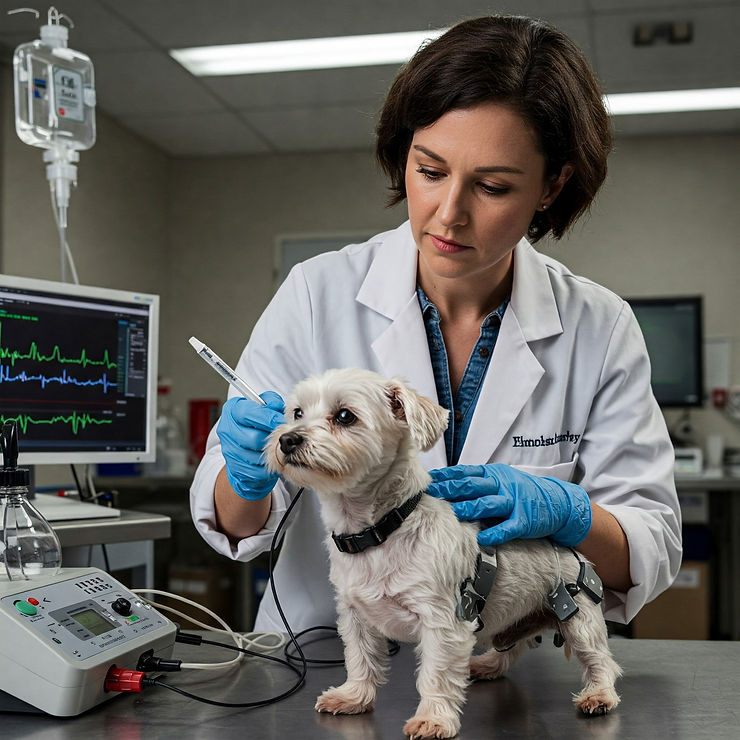Understanding canine anxiety: Tackling fear-based behaviors
- Trinity Newton
- Mar 28
- 2 min read

Welcome to Imagination Inovations LLC Dog Behavioral Services, where we decode the perplexing world of canine anxiety. Yes, your dog's "I'm being attacked by the vacuum cleaner" routine might actually be a cry for help. Let's face it, dogs have feelings too, even if those feelings are sometimes about the sheer terror of mail delivery.
What's Got Your Pup in a Panic?
Canine anxiety isn't just a quirky personality trait; it's a real thing. It can stem from:
Separation anxiety: "You're leaving? But... what about me? Who will guard the couch?"
Noise phobias: "Thunder? Fireworks? Is the world ending?"
Social anxiety: "New people? New dogs? Nope, I'm out."
Generalized anxiety: "Existential dread, but make it furry."
Past trauma: "That time the squirrel won... never forget."
It's important to remember that these are real issues, and not just dogs being difficult. According to research, canine anxiety is a widespread issue that can greatly impact a dogs quality of life. (Ogata, 2016).

Decoding the "Drama" (aka Fear-Based Behaviors)
How do you know if your dog is genuinely anxious or just auditioning for a canine soap opera? Look for these signs:
Panting and pacing (like they're late for a very important dog meeting).
Trembling (is it cold, or are they reliving that vet visit?).
Excessive barking (because the mailman is clearly a supervillain).
Hiding (under the bed, the couch, the nearest available human).
Destructive behavior (Because chewing your favorite shoes, helps calm the nerves, right?)
Changes in appetite.
Inappropriate urination or defecation.
Lip licking, yawning, or other displacement behaviors.
Strategies for Turning "Drama Queen" into "Zen Master"

Here's how to help your furry friend find their inner peace:
Create a Safe Space: A doggy "fortress of solitude" is essential. Think crate, quiet room, or anywhere they can retreat from the horrors of daily life.
Positive Reinforcement Training: Treats, praise, and affection. Basically, bribe them with love.
Desensitization and Counterconditioning: Slowly introduce them to their fears. For instance, play thunderstorm sounds at a low volume while giving treats. Think of it as exposure therapy, but for dogs.
Routine and Consistency: Dogs love schedules. It's like their own personal "to-do" list.
Professional Help: When all else fails, call in the experts. Imagination Inovations LLC Dog Behavioral Services is here to help. Also consulting with your vet, and as a side note, consulting with a nutritionalist, like Anna Hansen, can provide a well rounded approach.
Enrichment and Exercise: Mental and physical stimulation are key. Puzzle toys, walks, and playtime can work wonders.
Imagination Inovations LLC Dog Behavioral Services: We're Here to Help (and We've Seen It All)

We understand that dealing with canine anxiety can be challenging. That's why we're here to provide the support and resources you need.
Conclusion
Canine anxiety is real, but it's manageable. With a little patience, some humor, and a lot of treats, you can help your dog live a happier, less stressful life.
Reference:
Ogata, N. (2016). Separation anxiety in dogs: What progress has been made in our understanding of the most common behavioral problems in dogs? Journal of Veterinary Behavior, 16, 28–35. https://doi.org/10.1016/j.jveb.2016.02.005



Opmerkingen